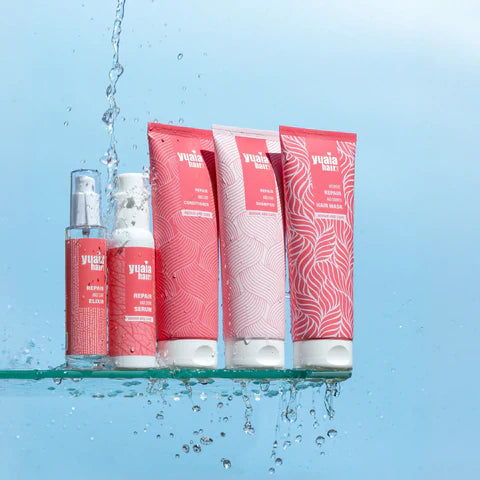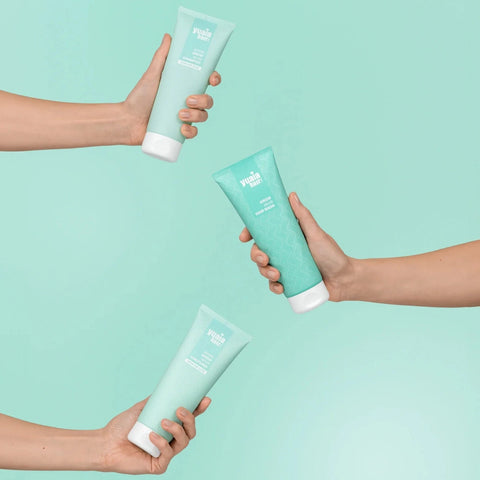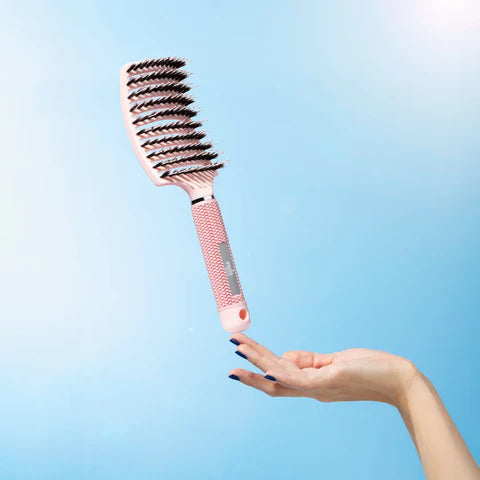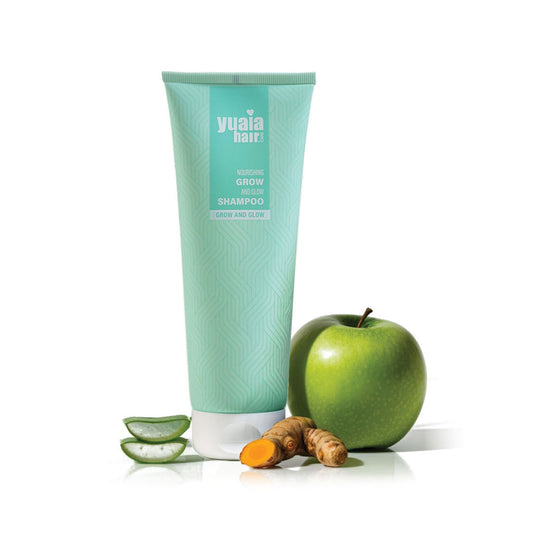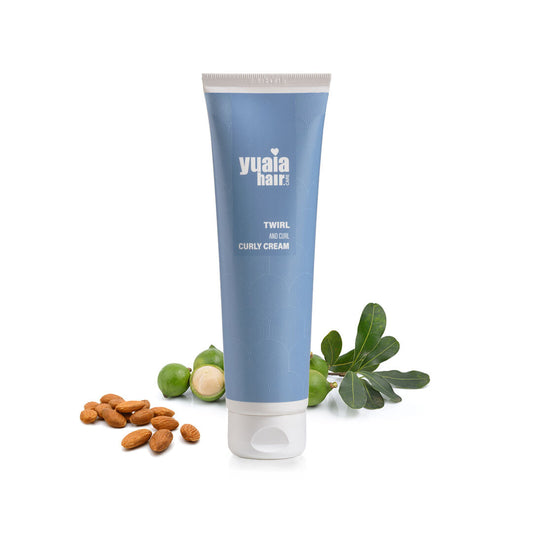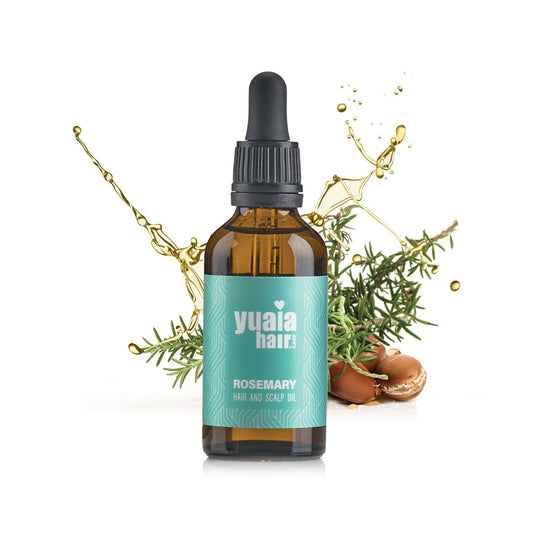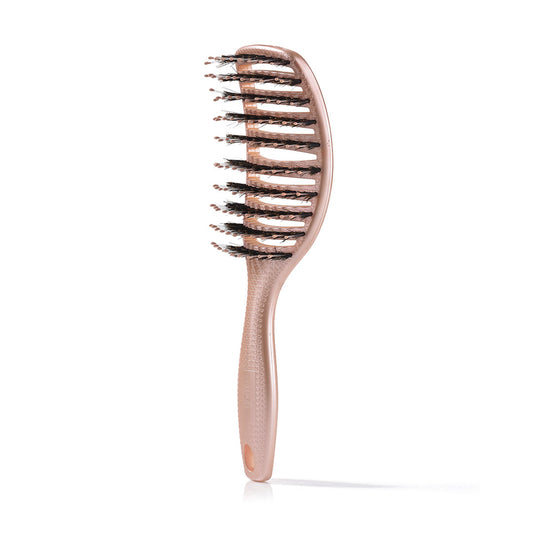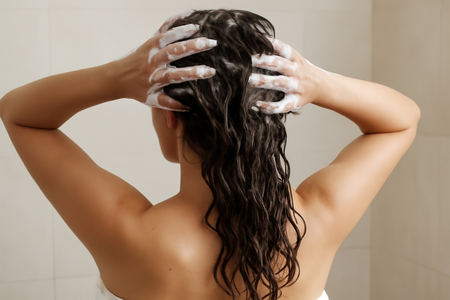
Hair type vs hair texture: Understanding the difference for better hair care

przez Nanna Bundgaard | 09. October 2025 | Czas czytania: 7 protokół
Przeczytaj więcej o autorzeImagine standing in the hair care aisle, overwhelmed by the myriad of products claiming to be perfect for your hair. You pick up a bottle, read the label, and find yourself puzzled by terms like "hair type" and "hair texture." You're not alone. Many people struggle to understand these concepts, and yet, knowing the difference is important for achieving the hair of your dreams.
Understanding both hair type and texture is important because it directly influences your hair care routine and styling choices. Without this knowledge, you might be using products that don't suit your hair, leading to less-than-ideal results. Let's delve into what makes hair type and texture distinct yet interconnected aspects of your hair's identity.
What is hair type?
Hair type refers to the natural curl pattern of your hair. It's categorized into four main types:
- Straight (Type 1): Hair that lies flat from the roots to the tips without any wave or curl.
- Wavy (Type 2): Hair that forms gentle, loose waves.
- Curly (Type 3): Hair with well-defined curls that range from loose loops to tight ringlets.
- Coily (Type 4): Hair with tight curls or zigzag patterns, often referred to as kinky.
Each main category has subcategories, such as 2A, 3B, and 4C, which describe the specific curl pattern and tightness. Visualizing these types can help you identify your own hair type and understand its unique needs.
What is hair texture?
Hair texture, on the other hand, refers to the thickness of your hair strands. It's generally classified into three categories:
- Fine: Thin strands that are delicate and often prone to oiliness.
- Medium: Strands that are thicker than fine hair, offering more volume and resilience.
- Coarse: Thick strands that are strong but can be more prone to frizz.
The feel and appearance of your hair texture play a significant role in how your hair behaves and responds to different products and styles.
Understanding both your hair type and texture can transform your hair care routine. By knowing these characteristics, you can choose the right products and techniques to enhance your hair's natural beauty. For example, if you have fine, curly hair, you might benefit from using a lightweight, sulfate-free shampoo like our Grow and Glow Shampoo.
The importance of knowing both
Understanding your hair type and texture is not just about knowing what you have; it's about understanding how these two elements work together to influence your hair care routine. The combination of hair type and texture plays a pivotal role in determining the best styling techniques and product choices for your hair.
For instance, someone with fine, curly hair will have different needs compared to someone with thick, straight hair. Fine hair, regardless of its curl pattern, tends to be more fragile and can easily become weighed down by heavy products. On the other hand, thick hair can handle richer formulas that provide necessary moisture and control.
Common combinations and their care
Recognizing common combinations of hair type and texture can help tailor your hair care approach more effectively. Here are a few examples:
- Fine, curly hair: This combination benefits from lightweight products that enhance curls without weighing them down. Our Twirl and Curl curly cream is designed to define curls while providing a soft hold.
- Thick, straight hair: Thick hair can often handle heavier products that offer more moisture and control. Consider using a nourishing hair oil to maintain shine and manageability.
- Medium, wavy hair: This versatile combination can adapt to a variety of products but benefits from those that enhance natural wave patterns while providing hydration and frizz control.
Tailoring hair care to type and texture
Choosing the right products for your specific hair type and texture can significantly improve the health and appearance of your hair. For those with fine hair, lightweight, sulfate-free formulas are recommended to avoid buildup and maintain volume. Medium and coarse textures may require products that offer more moisture and protection.
Incorporating a hair oil, such as our rosemary hair oil, can be beneficial for those with thicker hair types. This oil helps to enhance shine and manageability, while also providing a soothing effect on the scalp.
Practical steps for identifying your hair type and texture
Determining your hair type and texture at home can be straightforward with the right approach. Here’s a simple guide to help you:
- Wash and dry: Start with freshly washed hair, free of any styling products. Allow it to air dry naturally to observe its true pattern and texture.
- Examine the curl pattern: Look closely at the natural shape of your hair. Is it straight, wavy, curly, or coily? This will help identify your hair type.
- Feel the texture: Take a small section of hair and rub it between your fingers. Is it fine and silky, medium and smooth, or coarse and thick? This will help determine your hair texture.
Avoid common mistakes like assessing hair when it's styled or weighed down by products, as this can lead to inaccurate results. Understanding your hair's natural state is key to choosing the right care routine.
Uzyskaj wysłany do Ciebie 10% kodu rabatowego
Otrzymuj najlepsze wskazówki i porady dotyczące włosów od Lotte i Nanna 🥰
How to care for different hair types and textures
Understanding how to cater to your specific hair type and texture can significantly improve your hair care routine. Each combination of hair type and texture has unique needs that, when addressed properly, can enhance the health and appearance of your hair.
For those with fine, curly hair, hydration is essential. Opt for lightweight products that nourish without weighing down your curls. Medium, wavy hair can benefit from products that enhance natural wave patterns while maintaining moisture balance. Coarse, straight hair often requires richer formulations to provide the necessary moisture and control to manage frizz and maintain shine.
At Yuaia Haircare, we offer a range of products tailored to various hair needs. Our rosemary hair oil is excellent for adding shine and manageability to thicker hair types, providing a soothing effect on the scalp as well.
Brushing techniques for different hair types
The way you brush your hair can significantly impact its health and appearance. Different hair types benefit from specific brushing techniques to minimize damage and enhance natural beauty.
For fine hair, using a gentle brush with soft bristles can prevent breakage. Medium hair types can handle a bit more tension, so a standard paddle brush works well. Coarse hair benefits from a boar bristle brush, which can help distribute natural oils and reduce frizz. Our curvy brush is perfect for gentle detangling and adding shine.
Visual aids and tools
Utilizing visual aids can be a great way to better understand and identify your hair characteristics. Interactive tools like quizzes or infographics can provide a clearer picture of your hair type and texture, helping you make informed decisions about your hair care routine.
Consider watching demonstration videos or exploring detailed images that showcase different hair types and textures. These resources can offer valuable insights and tips for managing your unique hair characteristics effectively.
Frequently asked questions
What products should I avoid for fine hair?
For fine hair, it's important to avoid heavy products that can weigh down your strands, such as thick oils or silicones. Opt for lightweight, volumizing products to maintain body and movement.
Can hair texture change over time?
Yes, hair texture can change due to various factors such as age, hormonal shifts, and environmental influences. It's important to adjust your hair care routine as needed to accommodate these changes.
Why is my hair a mix of types?
It's common for hair to have a mix of types due to natural variation. This can result in different sections of your hair having distinct characteristics. Managing mixed types involves using versatile products and techniques that cater to all aspects of your hair.
Uzyskaj wysłany do Ciebie 10% kodu rabatowego
Otrzymuj najlepsze wskazówki i porady dotyczące włosów od Lotte i Nanna 🥰
 Dostawa 2-5 dni
Dostawa 2-5 dni
 Ponad 100 000 zadowolonych klientów
Ponad 100 000 zadowolonych klientów
 Gwarancja satysfakcji
Gwarancja satysfakcji



